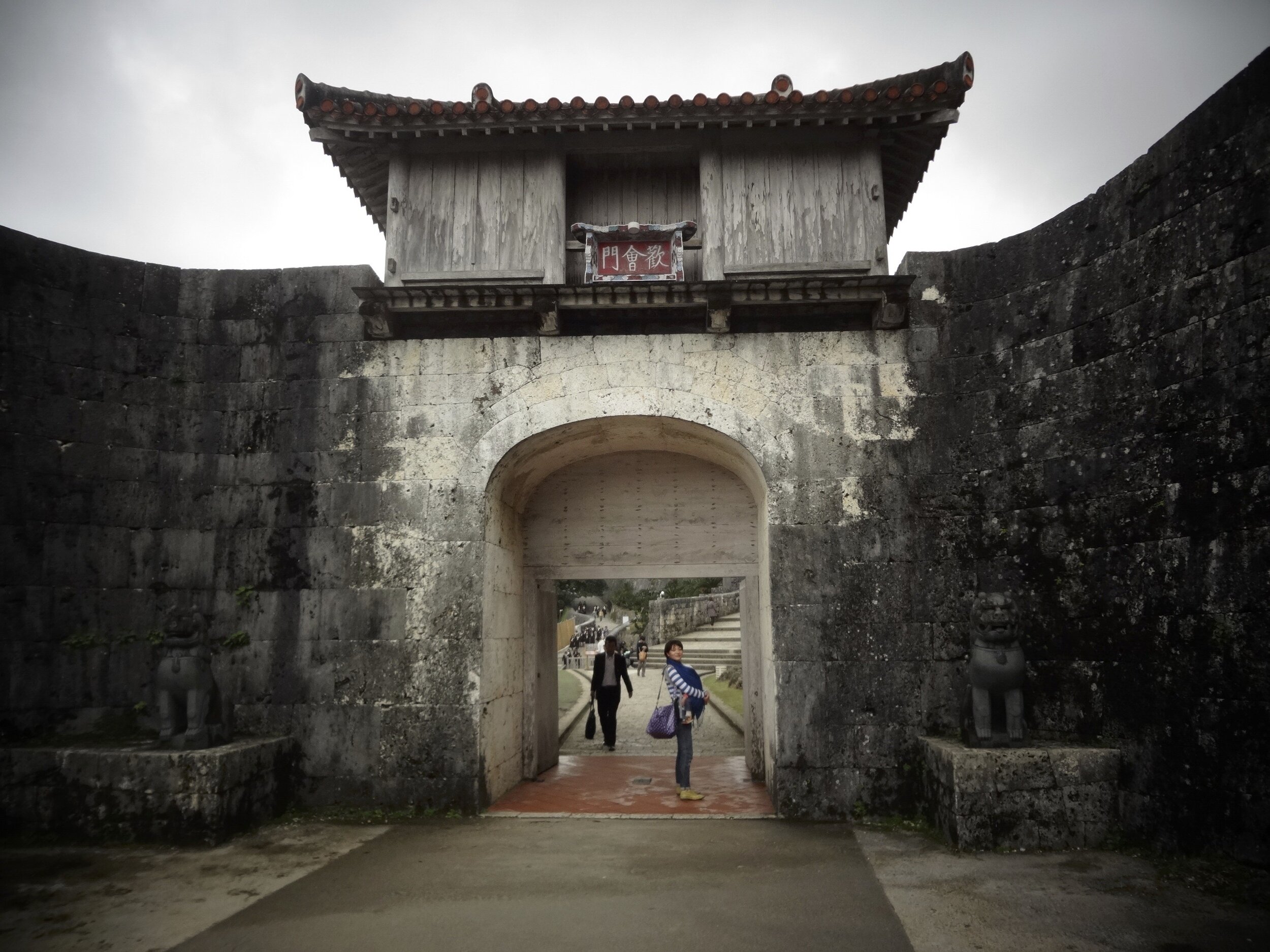By familiarizing yourself with a few rules of thumb, it will be easier for you to get over the first hurdle when learning Uchināguchi or the Okinawan dialect.
For starters, drop え and お. E (え) is pronounced like i (い); o (お) like u (う). By following this rule then, komé (米、こめ, rice) then is pronounced kumi (くみ). Similarly, yomé (嫁, よめ) becomes yumi (ゆみ). The Okinawan festival of Shīmī (しーみー) that occurs in April or May follows this same rule. In standard Japanese it is pronounced Seimei (清明) and in Chinese Qīngmíng and refers to gift solar term of the traditional East Asian lunisolar calendar the day when the sun reaches the celestial longitude of 15° and ends when it reaches 30°. This year it falls on April 4th.
In the song Futami Jōwa (二見情話、ふたみじょうわ; to be translated later), there is the following line:
二見村嫁や ないぶしゃやあしが辺野古崎坂の上い下い
Read as: ふたみむらゆみや ないぶしゃや 'あしが ふぃぬくざち ふぃらぬ ぬぶいくだいよ
Romaji: Futami mura yumi ya naibusha ya ‘ashi-ga fwinukuzachi fwira nu nubui kudai yo
Here you can see not only the vowel shift, but also the change in the pronunciation of some consonants, such as zaki (崎) which is zachi here. But, more importantly, look the 上い下い at the end of the line:
上い下いよ(ぬぶいくだいよ)
Nubui kudai yo
Change the u back to o and you get noboi kudai yo
Some say that in ancient Okinawan, there are still some vestiges of words and pronunciations of the Japanese spoken during the classical period Heian Jidai (794~1185), such that “i” in modern Japanese corresponded with “ri” in standard Japanese today. I have found this to also be somewhat true in Kagoshima where これ (koré, this) and それ (soré, that) etc. are sometimes pronounced こい (koi) そい (soi). You can also see this in Korea where the common family names Lee (季) and Lim (林) are actually pronounced I and Im, even though they spell it with an L. Let’s call it the “silent L”.
By dropping the “r”, Okinawa’s famous gusuku or castle is pronounced as Shui or Sui rather than Shuri (首里). (Incidentally, in the vicinity of the castle, Seimei, which I mentioned above is called ushīmī (御清明, o-seimei in standard Japanese). Again, o is pronounced u, even with an honorific like o (御).
Going back to ぬぶいくだいよ (nubui kudaiyo) it then follows that in standard Japanese it can be read のぼりくだりよ (nobori kudari yo).
It is said that if you can grasp those three things, namely:
E (え) → I (い)
O (お) → U (う)
Ri (り) → I (い)
. . . then you can understand some 80% of Okinawan. That’s probably an exaggeration. Other rules of thump include:
Ki (き) → chi (ち)
Te/Ti (て・ティ) → chi (ち)
Wa (わ) → a (あ)
This is, as I have mentioned before, where Uchinaa (Okinawa) comes from.
Post Corona Shuri. Look Ma, no people!


